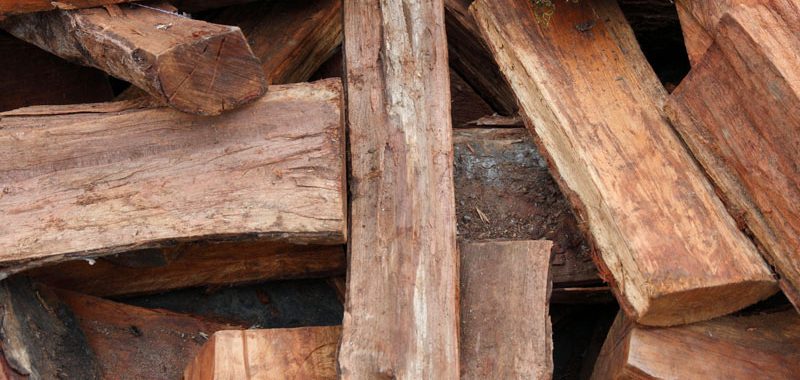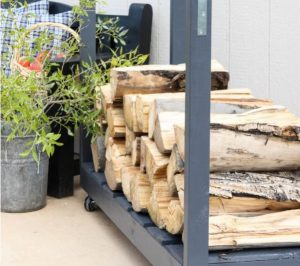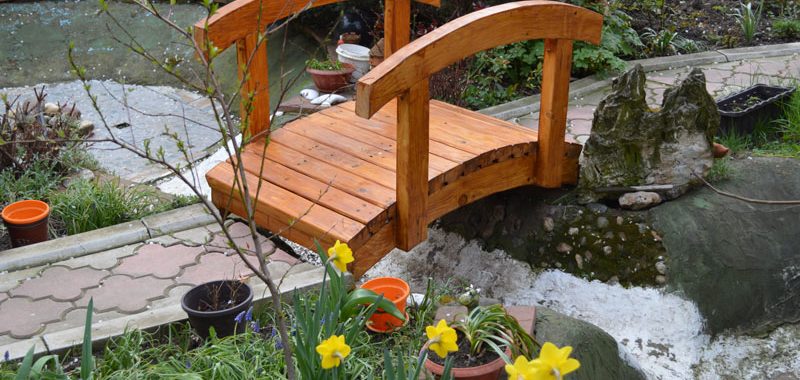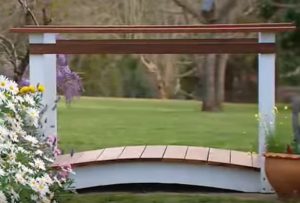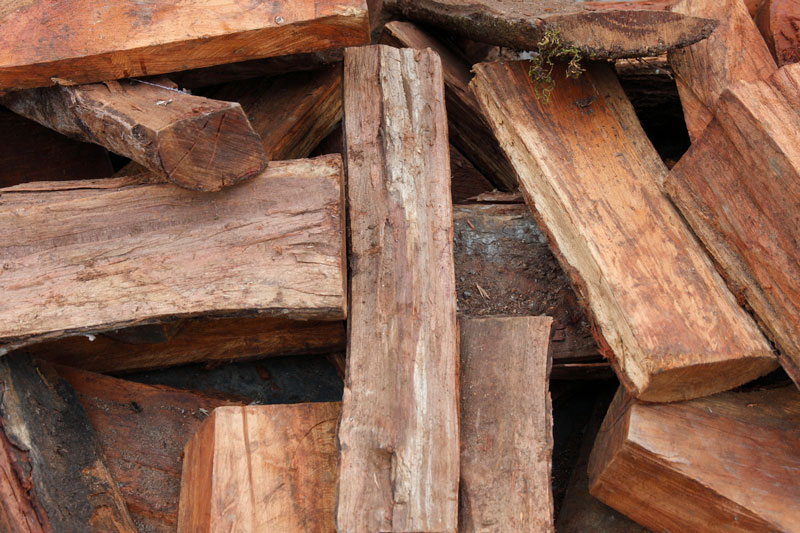
If you have a wood burning fireplace or stove, that means you’ve got a wood pile. And if you’re lacking a firewood rack, chances are that a heap of unorganized wood is sitting by your back door creating an eyesore.
Even if your firewood is stacked neatly outside the door, you still need to make sure it doesn’t lean up against your house and trap moisture or you will create the ideal conditions for rotting wood and vermin.
The perfect solution? A new firewood rack that will help you stack your wood and create an attractive feature for your deck, porch or backyard. A well-made wood rack helps you store firewood nearby and keeps your porch or front step clean, and dry.
So, let’s “fire” up the DIY and get to work! Check out these easy DIY outdoor firewood racks:
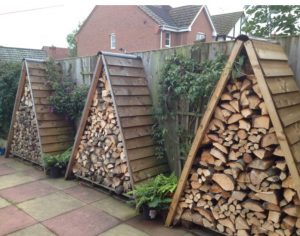
Stylish Storage
Looking for a stylish way to store wood? Using a pallet as a base, you can create a “tent” with a couple of two by fours and some planks of wood to use as shingles.
This idea comes from Single Track World. They also have some amazing ideas for building a DIY wood storage area or shed. Plus, they are beginner-level woodworker friendly.
Simple Firewood Rack
If you want to build a simple yet functional firewood rack, then this is the rack for you! This is a simple but gorgeous DIY that anyone can do in less than an hour. For less than $100 dollars, you can have a firewood rack in any size you want. Stop by GNH Lumber to pick up these supplies first:
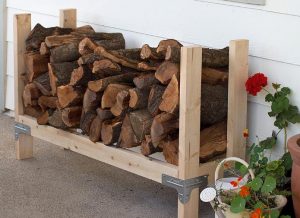 TOOLS
TOOLS
- Saw
- Screw gun
- 1/4″ hex head socket
- Tape measure
- Clamps
- Framing square
SUPPLIES
- (3) 2×4 8 ft. lumber (length can vary as needed)
- (4) metal connectors
- (1 box) connector screws
Check out DIY Done Right to download the plans and get started!
Rolling Firewood Cart
If you want a firewood rack that’s easy to move, you’ll need a cart with wheels. This fun DIY is not only easy to make, it’s mobile! Having a cart that’s mobile is convenient if you entertain regularly on your patio or deck.
This DIY can easily be made in a weekend. If you like the look of wood grain, you can seal the wood in its natural state. But if you want to add color to match your home’s siding or trim, you can also add a coat of paint. Here’s what you’ll need at GNH to get started:
SUPPLIES
- 2″ x 4″ x 10′ Lumber, cut to size
- 2″ x 3″ x 8′ Boards, cut to size
- Fence Picket Boards
- Miter Saw
- Screw Driver/ Drill
- Countersink
- 3″ Torx Deck Screws
- Clamps
- 4 Casters
- Sanding Block
- Porter Cable Framing Nailer
- 2″ 8 CC Nails
- Air Compressor
- Tape Measure
- Patch Plus Primer
- Paint Brush
- 4 Corner Brackets
- Black Paint
All the directions and some great DIY photos of the process can be found on thewoodgraincottage.com.
Firewood Rack with Roof
This is an awesome video that walks you through the process of building a super cool firewood rack completed with a roof and enclosed sides. They make it look easy and the end project is amazing! If you want to create a firewood rack complete with a roof, check it out:
Happy building! And don’t forget that the experts at your local GNH Lumber are available to answer your questions, make suggestions, and help your complete your DIY project. Stop by today!

